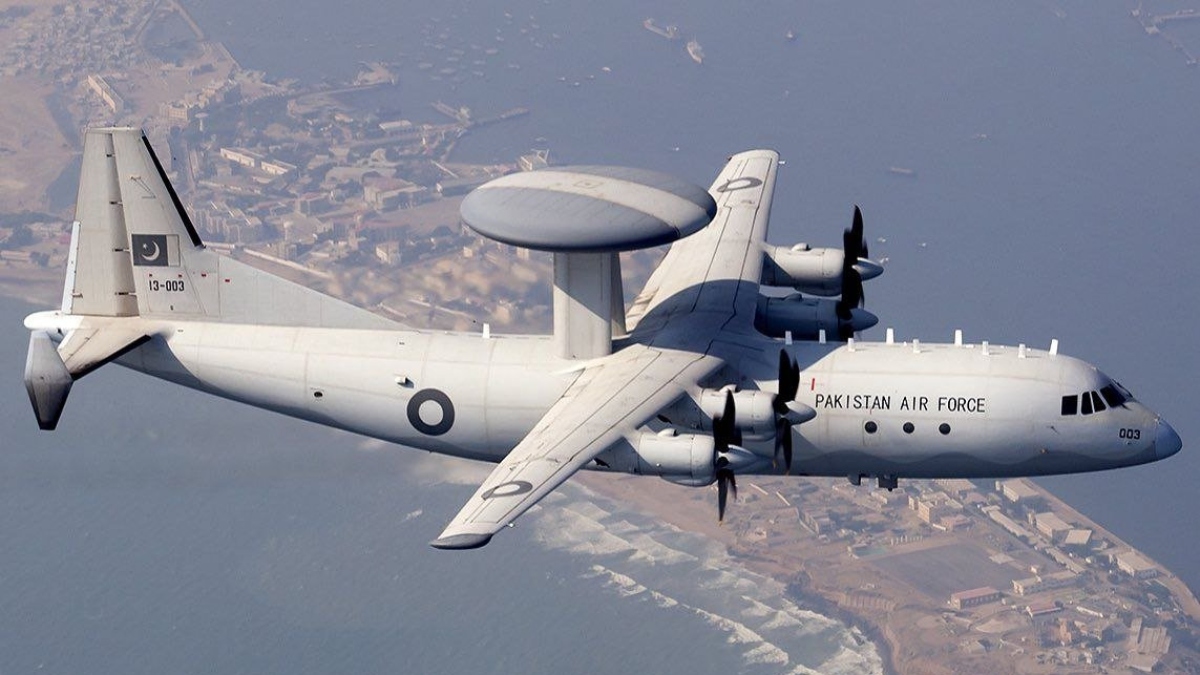Airborne early warning explained: Why PAF fighter jets become sitting ducks if AWACS is downed by India
 AWACS are a salient part of the Pakistan Air Force | X
AWACS are a salient part of the Pakistan Air Force | X
Amidst the ongoing India-Pakistan tensions in the backdrop of the Pahalgam terrorist attack and retaliatory 'Operation Sindoor', unconfirmed reports claimed that Islamabad lost its AWACS in Pak-Punjab. Bringing down the Airborne Warning & Control System (AWACS) is equal to making the Pakistan Air Force (PAF) blind in the sky as the airborne radar early warning system is critical for identifying incoming threats.
ALSO READ | How Pakistan reacted to reports of India shooting down its F-16, JF-17 fighter jets
Derived from the Boeing 707 airliner, it provides all-weather surveillance, command, control, and communications. However, there are variants of this originally American surveillance aircraft. In 2008, Pakistan reportedly became the first country in the region to buy the Chinese AWACS system. Beijing started developing them in 2004 after the US stopped the Israeli government from selling the system worth $1billion to Beijing.
What is AWACS?
Airborne Warning & Control System is an airborne early warning and control (AEW&C) system. It is said that they are capable of tracking hundreds of targets across vast distances. Sometimes referred to as The Boeing E-3 Sentry after the authentic US design, the AWACS is a modified aircraft equipped with a radar capable of detecting air traffic over large distances and at low altitudes. In simplest of terms, AWACS are aircraft that are capable of monitoring a nation's airspace in real-time.
ALSO READ | Pakistani pilots in Indian custody? PAF man reportedly caught alive from Jaisalmer
How AWACS work?
The antennas for the radar systems are found in the Rotodome (a term for a rotating radome) that is carried atop the AWACS. A radome is a structural, weatherproof enclosure that protects a radar system or antenna. According to a NATO relase, this structure rotates every ten seconds, providing 360-degree surveillance coverage. Radar systems are able to detect not only airborne targets but also maritime vessels.
ALSO READ | With border terror worries, govt doubles down on security rules for satellite internet players
AWACS Operators are able to identify and track enemy aircraft operating at low altitudes over all different types of terrain and give directions to friendly aircraft operating in the same area. "Because the onboard Radars are able to look down at the ground below, targets which would normally be obscured by stationary ground clutter can be picked up and tracked. Backed up by an EMS System, the crew can even determine the type of aircraft, ground equipment and ship to enhance the E-3A's surveillance capabilities. In addition to the surveillance systems, the AWACS fleet also carries extensive avionics equipment for navigation,communications and data processing," a NATO document said.
Defence